Sir Edmund Loder, Naturalist, Horticulturist, Traveller, and Sportsman, Exceptional Photo Book Featuring A Visit to the World
About Seller
6270 Este Ave.
Cincinnati , OH 45232
United States
With offices in Cincinnati, Cleveland and Denver, Cowan’s holds over 40 auctions each year, with annual sales exceeding $16M. We reach buyers around the globe, and take pride in our reputation for integrity, customer service and great results. A full-service house, Cowan’s Auctions specializes in Am...Read more
Two ways to bid:
- Leave a max absentee bid and the platform will bid on your behalf up to your maximum bid during the live auction.
- Bid live during the auction and your bids will be submitted real-time to the auctioneer.
Bid Increments
| Price | Bid Increment |
|---|---|
| $0 | $25 |
| $500 | $50 |
| $1,000 | $100 |
| $2,000 | $250 |
| $5,000 | $500 |
| $10,000 | $1,000 |
| $20,000 | $2,500 |
| $50,000 | $5,000 |
| $100,000 | $10,000 |
About Auction
Nov 17, 2017 - Nov 18, 2017
Cowan's Auctions dawnie@cowans.com
- Lot Description
Oversized volume, 13 x 17 in. Titled in gilt, 19th Century Tour of the World; A Visit to the World's Astronomical Observatories, with 19th Century Astronomical Observatories in gilt on spine. Volume includes original boards, restored with attractive new leather spine. Containing approx. 205 albumen photographs, ranging in size from 3 x 4 in. to 9.5 x 11.5 in., with the majority measuring approx. 7 x 9 in. Ca 1870s-early 1880s. The content is wide ranging and is a true reflection of Sir Edmund Loder's life and numerous interests. The photographs range from observatories and telescopes around the world, to London landmarks, the English countryside, and hunting lodges.
The album begins with a portrait of a wedding group, inscribed in pencil below, "Wedding Party 1876 Leonardslee." Although no further identification is included, this is almost certainly one of the photographs taken on Edmund Loder's wedding day in 1876, when he married Marion Hubbard. He eventually bought the property of Leonardslee from his parents-in-law in 1889, and at least 4 photographs of the property are featured in the album. While there is a wealth of information available on the fascinating Sir Edmund Loder, the most intriguing is a 356pp biography written about him in 1923, titled Edmund Loder Naturalist, Horticulturist, Traveller and Sportsman A Memoir by Sir Alfred E. Pease, Bt., which accompanies the lot. The biography contains a photograph of Loder, which is most certainly the groom in the wedding photograph. Loder almost certainly appears in a number of other group photos featured throughout the album.
Highlighted subject matter includes over 40 exterior and interior views of a number of English estates, castles, and "farm houses," identified as Leonardslee, Whittlebury, Floore, Craigside, Rockingham Castle, and Kirby, showing everything from the home itself to the gardens, tennis courts, and the surrounding landscape; 6 photographs showing hundreds of taxidermic game on display at the Floore Safari Lodge, as well as hunting-related photos; approx. 50 photographs of trees, flowers, and plant life in England, New Zealand, Ceylon, Algiers, and India - this example including Francis Frith's blindstamp; over 25 photos documenting travel across the globe, from London, England and its surroundings, including 2 interesting views of Wimbledon, to South and East Asia; 12 photographs of observatories and telescopes in Floore (England) and Paris, as well as Washington, DC (2 showing the Clark Telescope at the US Naval Observatory), and the Lick Observatory in San Jose, CA, (6 photos credited to E. Mathews, published by Taber); and an exceptional photograph of the moon, nearly full, with applied paper label noting that it was an enlargement from a negative taken with De la Rue's Telescope at the Oxford University Observatory.
Sir Edmund Loder, (1849-1920), though known primarily as a naturalist, was a rare 19th-century example of a Renaissance man, with interests and knowledge ranging from the field of zoology to the literary stylings of Lord Byron and William Shakespeare. Loder is remembered for having a zeal for knowledge and expertise that kept him actively and avidly learning. If he determined the mastery of a subject was beyond his capabilities or desires, he dropped it and traded it for subjects in which he could thrive. Such was the case with astronomy, a field to which Loder dedicated years of study in his very own observatory. Though he had a greater knowledge of astronomy than most of his contemporaries, he did not believe himself to be a “mean astronomer,” and thus turned his attention to other pursuits such as zoology and horticulture (p. 10).
Loder’s interest in a subject was like an insatiable appetite – he devoured whatever information he could get his hands on. Millais wrote an article in Country Life describing this phenomenon:
When he took up zoology and botany he did it first by acquiring a great library and then reading every book on the subject before beginning to propound his own new theories. His memory and analytical powers were extraordinary and he seemed almost incapable of making mistakes. One wet day we sat in the library at Leonardslee and I gave him a new book on Africa I had brought with me. He kept turning the pages at such a rate that he did not seem to be reading it at all, and when he threw it down after an hour, I asked him what he thought of it. Then he began: ‘You will see the author says on page 22’ – then followed an analysis of the writer’s views, which he proved were completely wrong, as was the case. . . And so on throughout the whole volume, examining every error and praising every good point, as if he knew the whole of it by heart. . . Edmund Loder had read and digested the whole matter in one hour, and what is more, could remember all about it afterwards. – J. G. Millais in Country Life, May 22nd, 1920.
This intense mental capacity did not keep Loder from also being a desirable social companion, as his many friends praised his kind nature, wise counsel, and abounding vitality. His studies, however, did make him a rather private man. Though he attended the local Bench, served once as High Sheriff for Northamptonshire, this was about the extent of his public life. His biographer, Sir Alfred E. Pease, described him as “a man who is at his best at home” (p. 16). Despite his preference for the private life, his loyalty to his professional memberships in the Zoological and Horticulture Societies, the Garden Committee, and others, kept him attending meetings and assemblies to contribute valuable insights.
Edmund’s grandfather, Giles Loder (b. 1786) was the man who built up the family fortune with his foray into Russia as a “Merchant Adventurer,” a business venture he continued in London. The Loders’ connection to Russia stemmed first from John Higginbotham, (Edmund’s great grandfather on his grandmother’s side) whose son William was appointed a Court Physician by Czar Nicholas I and a special medical attendant to his daughters, the Grand Duchesses of Russia. William’s sister, Sophie Higginbotham, was the English governess to the Grand Duchess Alexandra, and along with her brother, a favorite of the Imperial family. William Higginbotham later received the Star of the Holy Order of Vladimir.
Edmund also inherited a fascinating history on his mother’s side. Maria Georgiana was the daughter of Mr. Hans Busk, who had been on intimate terms with some of the most famous literary and political figures of his time including Edmund Burke, Sir Philip Francis, Charles James Fox, Sheridan, Canning, Perceval, Wilberforce, Wyndham, Byron, Moore, and Scott.
Edmund’s father, Robert Loder, though a passionate Conservative politician, was most interested in agriculture, a characteristic he passed on to his son along with a sprawling estate at Whittlebury in Northamptonshire. Edmund would go on to have many homes, however, perhaps the most loved of which was the High Beeches in Crawley, Sussex, where he lived for 26 years including his fondly remembered childhood. His wife’s home at Leonardslee, also in Sussex, became the home at which Edmund spent the greatest amount of years, until the end of his life. Pease describes Leonardslee as a place in which, “Nature lent herself in every direction to Loder’s taste, his humour and his art” (p. 61).
As a young boy, Loder attended Eton College, a boarding school for boys. He left no remarkable impression except for his excellence in drawing and his odd affinity for collecting butterflies and caterpillars, the latter of which were confiscated as they were believed to be poisonous. Loder continued onto Cambridge, at which he developed his love for astronomy and natural science. Friends remembered his telescope and microscope, two instruments Loder utilized at great length during his undergraduate career. It was after graduating from Cambridge that Loder began building an observatory in his garden and sought better and more precise equipment, leading him to travel to America in 1873, where he explored and hunted buffalo in the “Wild West,” observed Mormons at a gathering of the Latter-Day Saints, saw geysers and sea lions near San Francisco, and had countless other experiences that broadened his perspective and sparked his desire to explore the world. Over the next couple of years, Loder travelled far and wide, to places including Sweden, Finland, Russia, India, Cashmere, the Andamans and Nicobars, Burma, Sumatra, Java, China, Japan, the United States, and Canada, keeping detailed diaries of his travels and experiences that portray a young man eager to learn and record as much as possible, especially as it related to plants and animals.
Each of Loder’s adventures seemed to have a purpose – typically a type of game to hunt or a plant to collect, as his interests dictated. In the years following Loder’s marriage to Marion Hubbard (1854-1922) in 1876, Edmund Loder hunted for wild sheep in the Aures Mountains (Algeria), cacti on the Mexican Frontier, alpine plants in the Dolomite Mountains (Italy), white goats in the Rocky Mountains, numerous kinds of big game in Africa, and countless other specimens in remote corners of the world. In an expedition in British East Africa in 1908, Loder boasted 62 heads including one giraffe, five rhinoceros, two zebras, one spotted hyena, six gazelles, etc. to add to his collection.
With a life steeped in adventure, a mind capable of retaining and utilizing large quantities of complex information, and a will to leave his mark on the world, it is no wonder that Edmund Loder left behind a museum at his home in Leonardslee that was said to contain the best collection ever put together by a single man (p. 311). The gardens themselves are rated at Grade I on the Register of Historic Parks and Gardens to this day.
At his memorial service his daughter, Patience, fittingly eulogized, “Father had a peculiar grasp of any subject in which he was interested. . . from astronomy and colour photography and from collecting conifers to jade. . . I wonder whether the Garden he now walks in is much fairer than the beloved one here [Leonardslee] which he made so beautiful; and I like to think of him gardening still – privileged to add even to the glories of Paradise” (pp. 341-342).
Pease, Sir Alfred E. Edmund Loder, Naturalist, Horticulturist, Traveller and Sportsman: A Memoir. London: John Murray, 1923.
Eliminate the Hassle of Third-Party Shippers: Let Cowan's Ship Directly To You!Condition
If you'd like a shipping estimate before the auction, contact Cowan's in-house shipping department at shipping@cowans.com or 513.871.1670 x219. - Shipping Info
-
Eliminate the Hassle of Third-Party Shippers: Let Cowan's Ship Directly To You!
If you'd like a shipping estimate before the auction, contact Cowan's in-house shipping department at shipping@cowans.com or 513.871.1670 x219.
At the request of the buyer, Cowan's will authorize the shipment of purchased items. Shipments usually occur within two weeks after payment has been received. Shipment is generally made via UPS Ground service. Unless buyer gives special instructions, the shipping method shall be at the sole discretion of Cowan's Auctions, Inc.. Cowan's is in no way responsible for the acts or omissions of independent handlers, packers or shippers of purchased items or for any loss, damage or delay from the packing or shipping of any property.
-
- Buyer's Premium



 EUR
EUR CAD
CAD AUD
AUD GBP
GBP MXN
MXN HKD
HKD CNY
CNY MYR
MYR SEK
SEK SGD
SGD CHF
CHF THB
THB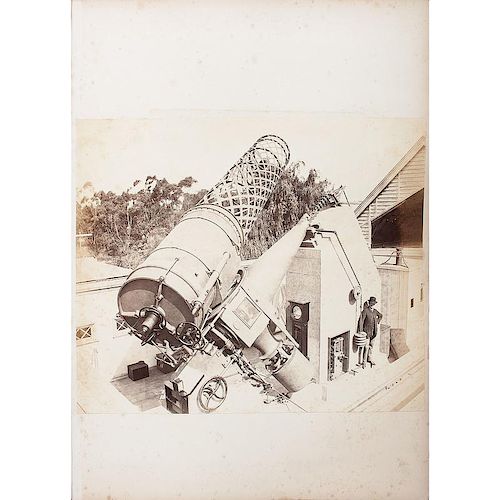

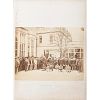
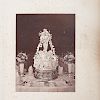
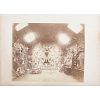
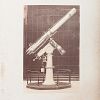
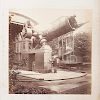
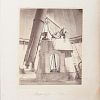
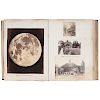
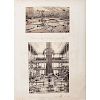
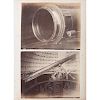
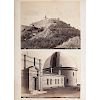



![[ABOLITION] Rare 1804 Anti-Slavery Pamphlet, One of Earliest Known](https://s1.img.bidsquare.com/item/m/2969/29696581.jpeg?t=1TL9FO)
![[AMBROTYPE] Children and Rabbit](https://s1.img.bidsquare.com/item/m/2903/29032056.jpeg?t=1TsHTb)
![[EARLY PHOTOGRAPHY] Photographer & Studio CDVs](https://s1.img.bidsquare.com/item/m/2900/29009609.jpeg?t=1TrhUL)
![[CIVIL WAR] Paralyzed WIA Confederate Veteran and his Black Servant CDV](https://s1.img.bidsquare.com/item/m/2900/29009605.jpeg?t=1TrhPc)
![[AFRICAN AMERICANA] Boy Wearing Top Hat](https://s1.img.bidsquare.com/item/m/3009/30096223.jpeg?t=1TVkct)
![[LINCOLN] Candlestick Attributed to Abraham Lincoln](https://s1.img.bidsquare.com/item/m/2903/29032115.jpeg?t=1TsIgs)
![[NATIVE AMERICANS] Impressive Group of Ten (10) Native American Cabinet Cards](https://s1.img.bidsquare.com/item/m/2903/29032168.jpeg?t=1TsIyk)
![[SLAVE BADGE] 1814 Charleston "Servant" Slave Hire Badge](https://s1.img.bidsquare.com/item/m/2903/29032208.jpeg?t=1TsIUc)
